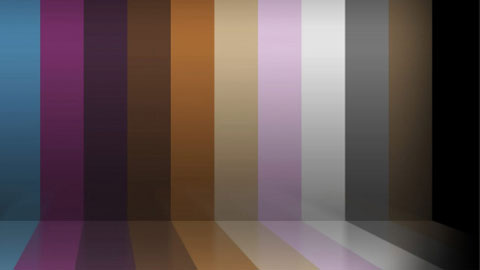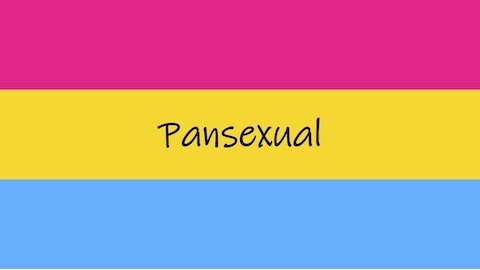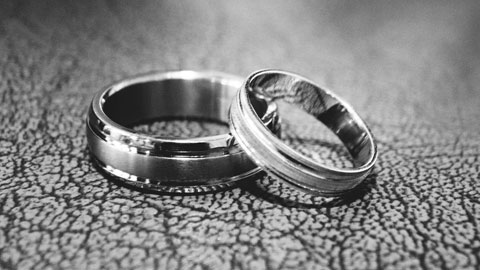Bisexuality
Some people assume bisexuality is a phase and that people who say they are bisexual are really gay or straight. But bisexuality is a distinct sexual identity, different from gay or straight.
Dee
Who is Dee?Hi! I’m here to help you explore what it means to be bisexual. It starts with the core element of attraction. In other words, who are you attracted to? Bisexuality is often misunderstood, but the more we learn, the more we understand that it is a sexual orientation all its own. And it has nothing to do with how we show up in the world, or the body we were born with. Let’s dig in...
The Basics
Bisexuality is often misunderstood by both the gay and straight communities. Increase your understanding here!

What is bisexuality?
Hear from one of the top researchers of bisexuality, Dr. Tania Israel about the complexities of bisexuality.

How does someone know if they are bisexual?
Bisexuality is more than attraction or behavior. It’s about how people see themselves and how they identify.

More than just gay vs. straight
For decades, human sexuality researchers have measured a spectrum of orientations, including bisexuality.

What does it mean to be pansexual?
Learn about what it means to be pansexual and why it's a term that's gaining in popularity.

What's the difference?
Get the info on what it means to identify as pansexual vs. bisexual.

The wine, not the label
Actor Dan Levy neatly sums up his character's sexual identity in an iconic scene from the tv sitcom Schitt's Creek.
Real people
Hear from people who are bisexual as they talk about their identities and relationships.

Talking about bisexuality
Dr. Tom Duffin talks about bisexuality, the phenomenon of bisexual erasure and his lived experiences as a man identifying as bisexual.

Monogamy and bisexuality
Explore 3 relationships in which one of the partners is bisexual.

"Do I even have the right to wear the label 'bisexual' anymore?"
A bisexual woman who is married to a man describes her inner struggle over whether to come out.
The Science
Until recently, researchers largely overlooked the study of bisexuality.

Overcoming hurdles to bisexuality research
Explore why bisexuality has been overlooked by scientists and is still invisible to many.

It's not just a phase
Dr. Lisa Diamond, Ph.D., has conducted significant research that debunks the myth that bisexuality is just a phase.

What can we learn from arousal patterns?
Scientists have studied sexual arousal patterns to better understand bisexuality.
Glossary
Allosexual
(Adj.) An umbrella term for people who experience sexual attraction. A person who is allosexual can identify as gay, lesbian, straight, bisexual or any other sexual orientation. Learn More
Attraction
(Noun) A feeling of interest in another person. Attraction can take different forms, including sexual, romantic, physical, emotional, and aesthetic attraction. Individuals may experience just one or multiple types of attraction for another person. Learn More
Bisexual
(Adj.) Refers to the sexual orientation of a person who experiences sexual, romantic, and/or emotional attraction to persons of more than one gender, not necessarily equally or at the same time, in the same way, or to the same degree. Also known as "bi". Distinct from pansexual, which refers to the capacity to be attracted to persons regardless of gender identity. Learn More
Gay
(Adj.) Describes the sexual orientation of persons who are emotionally, sexually, and/or romantically attracted to persons of the same sex/gender. While the term is most often used to describe men, it can also be used more broadly to refer to both men and women (i.e., gay man, gay woman, gay people). Learn More
Gender non-conforming (GNC)
(Adj.) Describes a person who does not behave in a way that conforms to traditional expectations for their gender, or whose gender expression does not fit neatly into a category. GNC does not mean non-binary and cisgender people can be GNC as well. Also known as gender variant. Learn More
Heterosexual / Heterosexuality
(Adj.) (Adj./Noun) Describes a primary or exclusive sexual, emotional, and/or romantic attraction to a gender other than one's own. Typically this means a woman who is primarily attracted to men and vice versa. Also referred to as "straight". Learn More
Homosexual / Homosexuality
(Adj./Noun) Describes a primary or exclusive sexual, emotional, and/or romantic attraction to one’s own sex/gender. The term is considered outdated by many in the LGBTQ+ community but is still used in some research contexts. Learn More
Lesbian
(Adj./Noun) Refers to the sexual orientation of women who are emotionally, sexually, and/or romantically attracted to women. Learn More
Pansexual
(Adj.) Describes the capacity to experience sexual, romantic and emotional attraction to an individual regardless of gender. Persons who identify as pansexual sometimes describe themselves as "gender blind"--that is, gender does not factor into attraction for them. More expansive than the term bisexual, which typically refers to attraction to more than one--but not necessarily all--genders. In fact, the prefix pan-, which comes from the Greek language, means “relating to the whole of the universe.” Learn More
Plurisexual
(Adj) An umbrella term for persons who experience attraction to more than one gender. Identities such as bisexual, pansexual, and queer fall under this category. Learn more
Queer
(Adj.) Alternative term to LGBTQ+. An umbrella term for anyone who does not identify as heterosexual. Historically a negative term and insult, queer is being reclaimed by many LGBTQ+ people—particularly youth—as a source of pride and political identity. The term is valued by some for its defiance, by some because it can be inclusive of the entire community, and by others who find it to be an appropriate term to describe their more fluid identities. “Queer” is still disliked by some people in the LGBTQ+ community and its use by straight people can be considered offensive. Due to its varying meanings, this word should only be used when self-identifying or quoting someone who self-identifies as queer (i.e. “My cousin identifies as queer.”) Learn More
Questioning
(Adj.)Describes the process of discovery and exploration about sexual orientation, gender identity, gender expression, or a combination thereof. Can be an aspect of adolescence as young people explore various facets of their identity.
Learn More
Sapphic
(Adj.) Drawn from the Greek lesbian poet Sappho’s name, sapphic is an inclusive umbrella term used to describe a woman or non-binary person of any sexual orientation (bisexual, lesbian, pansexual, or queer) who is attracted to other women. Learn More
Sexual identity
(Noun) The way a person views and understands their sexual orientation, such as gay, straight, bisexual, or some other orientation. Learn More
Sexual orientation
(Noun) Commonly used to refer to who we are or are not attracted to -- sexually, romantically, and emotionally--the relationships we have, and how we personally identify. Sometimes used more narrowly to refer to sexual attraction, behavior and identity. Attraction and behavior do not always define a person's sexual orientation. (e.g. a man who has sex with men may not identify as gay). Learn More
Straight
(Adj.) Another term for heterosexual. Refers to the sexual, emotional, and/or romantic attraction to a gender other than one's own. Typically this means a woman who is primarily attracted to men and vice versa. Learn More
Explore More Topics
Citations & Sources
Bouchard, K.N., Timmers, A.D., & Chivers, M.L. (2015). Gender-specificity of genital response and self-reported sexual arousal in women endorsing facets of bisexuality [Abstract]. Journal of Bisexuality, 15(2), 180-203. https://www.tandfonline.com/doi/abs/10.1080/15299716.2015.1022924
Clark, T. (2017). Invisability: Talking about bisexuality and aging [Fact sheet]. National Resource Center on LGBT Aging. https://www.lgbtagingcenter.org/resources/pdfs/INVISIBILITY%20bisexuality%20and%20aging%20NRC%20fact%20sheet%20final%206.2.20171.pdf
Copen, C.E., Chandra, A., & Febo-Vazquez, I. (2016, January 7). National health statistics report: Sexual behavior, sexual attraction, and sexual orientation among adults aged 18–44 in the United States: Data from the 2011–2013 National Survey of Family Growth (Report No. 88). Centers for Disease Control and Prevention. http://i2.cdn.turner.com/cnn/2016/images/01/06/nhsr88.pdf
Danielle. (n.d.). I’m From Mt. Sinai, NY. I'm From Driftwood. http://imfromdriftwood.com/im-from-mt-sinai-ny/
Denizet-Lewis, B. (2014, March 23). The scientific quest to prove bisexuality exists. New York Times Magazine. https://www.nytimes.com/2014/03/23/magazine/the-scientific-quest-to-prove-bisexuality-exists.html
Diamond, L. (2008). Female bisexuality from adolescence to adulthood: Resulting from a 10-year longitudinal study. Developmental Psychology, 44(1), 5-14. https://pubmed.ncbi.nlm.nih.gov/18194000/
Dotinga, R. (2016, January 8). More women report having same-sex relationships. CBS News. http://www.cbsnews.com/news/more-women-report-same-sex-relationships
Gates, G.J. (2011). How many people are lesbian, gay, bisexual, and transgender? Williams Institute, UCLA School of Law. https://williamsinstitute.law.ucla.edu/publications/how-many-people-lgbt/
Gates, G. J. (2014). LGBT demographics: Comparisons among population-based surveys. Williams Institute, UCLA School of Law. https://williamsinstitute.law.ucla.edu/publications/lgbt-demo-comp-pop-surveys/
Israel, T. (2010, October). Bisexuality and youth: Introduction to the special issue [Abstract]. Journal of Bisexuality, 10(4), 359-365. https://www.tandfonline.com/doi/abs/10.1080/15299716.2010.521038
Israel, T. (2015, July 7). Bisexuality and beyond: Tania Israel [Video]. YouTube. https://www.youtube.com/watch?v=APPb__tpGHk
Johnston, T.R. (2016). Bisexual aging and cultural competency training: Responses to five common misconceptions [Abstract]. Journal of Bisexuality, 16(1), 99-111. https://www.tandfonline.com/doi/abs/10.1080/15299716.2015.1046629
The Kinsey Scale. (2019). Kinsey Institute. https://www.kinseyinstitute.org/research/publications/kinsey-scale.php
The Klein Sexual Orientation Grid. (2014). American Institute of Bisexuality. http://www.americaninstituteofbisexuality.org/
Rainbow Health Ontario. (2015, May 27). Bisexual communities and partners [Video]. YouTube. https://www.youtube.com/watch?v=h5pM3ejn8Ow
Rosenthal, A.M., Sylva, D., Safron, A., & Bailey, J. M. (2012). The male bisexuality debate revisited: Some bisexual men have bisexual arousal patterns. Archives of Sexual Behavior, 41(1), 135-147. https://link.springer.com/article/10.1007/s10508-011-9881-7
Ward, B. W., Dahlhamer, J. M. Galinsky, A. M., & Joestl, S. S. (2014, July 15). National health statistics report: Sexual Orientation and Health Among U.S. Adults: National Health Interview Survey, 2013 (Report No. 77). Center for Disease Control and Prevention. https://www.cdc.gov/nchs/data/nhsr/nhsr077.pdf
